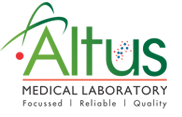Bile Acids-Total, Serum Test In Chandigarh
The concentration of bile acids in serum is elevated in patients with many structural liver diseases, due to the inability of the liver to extract bile acids efficiently from portal blood. Metabolic liver diseases such as Gilbert disease, Crigler-Najjar syndrome, or Dubin-Johnson syndrome do not appear to cause elevated bile acid concentrations. Bile acid levels may be altered even when other liver function tests are normal and may serve as a sensitive and specific indicator of liver disease.
Intrahepatic cholestasis of pregnancy (ICP) is a temporary condition caused by maternal liver dysfunction during pregnancy. It is characterized by intense generalized pruritus (itchiness) which usually begins in the third trimester. ICP is also known as cholestatic jaundice of pregnancy, cholestatic hepatosis, icterus gravidarum, and obstetric cholestasis.
There are several laboratory tests which can be done to confirm a diagnosis of cholestasis of pregnancy, including bile acids. Maternal blood levels of bile salts are often at least three times the normal level in ICP; however, the levels may be 10 to 100 times normal. Blood tests can also reveal increased levels of other liver enzymes that indicate general liver dysfunction, such as ALT, AST, and alkaline phosphatase. While ALT/AST levels may be normal or slightly elevated, alkaline phosphatase levels are almost always higher than normal (though this may be due, in part, to the alkaline phosphatase added to the mother’s blood from the placenta). However, if the liver enzymes are extremely elevated, other causes, such as viral hepatitis, should be considered. In the absence of bile acid tests, elevated ALT, AST and/or alkaline phosphatase levels in the setting of intense pruritus are generally adequate to diagnose cholestasis of pregnancy.



